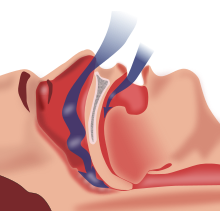Classification and Nature of Catathrenia
- Catathrenia is classified as a parasomnia in the ICSD-2, but its classification is debated.
- In the ICSD-3, catathrenia is included in the category of respiratory disorders.
- Ongoing debate exists about the nature and classification of catathrenia.
Signs and Symptoms of Catathrenia
- Catathrenia is not life-threatening.
- Bed partners hear deep breaths, followed by a high-pitched squeak or groaning sound during exhalation.
- The sounds occur exclusively during expiration and are interrupted during inspiration.
- Patients usually sleep normally despite the sounds, but sleep partners may be disturbed.
Characteristics and Variability of Catathrenia
- Vocal sounds in catathrenia are usually short or long vocalizations of the same letter, mainly [a], [e], or [o].
- Catathrenia sounds have harmonics and show regular patterns between nights.
- The duration of the sound varies from 0.5 to 49 seconds.
- Sound intensity ranges from 40dB to 120dB.
- The onset time of the noises during the night varies.
- Response to CPAP treatment depends on respiratory disorders.
- Catathrenia typically occurs during REM sleep, but it may also occur during NREM sleep.
Epidemiology and Diagnosis of Catathrenia
- Catathrenia was first described in 1983 and is considered rare.
- Misdiagnosis can occur, and a video-polysomnography with audio recording is necessary for diagnosis.
- Incidences of catathrenia range from 0.17% to 0.4%.
Research, Studies, and Awareness of Catathrenia
- Research has been conducted on the acoustic characteristics of catathrenia and its comparison to snoring.
- Polysomnographic studies have monitored patients with catathrenia during sleep.
- CPAP therapy has shown effectiveness in treating catathrenia.
- Scientific articles have been published exploring different aspects of catathrenia.
- Increased awareness and education about catathrenia can improve diagnosis and treatment.
This article needs additional citations for verification. (March 2015) |
Catathrenia or nocturnal groaning is a sleep-related breathing disorder, consisting of end-inspiratory apnea (breath holding) and expiratory groaning during sleep. and it describes a rare condition characterised by monotonous, irregular groans while sleeping. Catathrenia begins with a deep inspiration. The person with catathrenia holds her or his breath against a closed glottis, similar to the Valsalva maneuver. Expiration can be slow and accompanied by sound caused by vibration of the vocal cords or a simple rapid exhalation. Despite a slower breathing rate, no oxygen desaturation usually occurs. The moaning sound is usually not noticed by the person producing the sound, but it can be extremely disturbing to sleep partners. It appears more often during expiration REM sleep than in NREM sleep.
| Catathrenia | |
|---|---|
 | |
| Specialty | Otorhinolaryngology, sleep medicine, Somnology |
| Symptoms | groaning or moaning during sleep |
Catathrenia is distinct from both somniloquy (sleep talking) and obstructive sleep apnea (OSA). The sound is produced during exhalation, as opposed to snoring, which occurs during inhalation.
Wikidata
Catathrenia (from the Greek kata, meaning “below”, and threnia, meaning “to lament”)
catathrenia (uncountable)